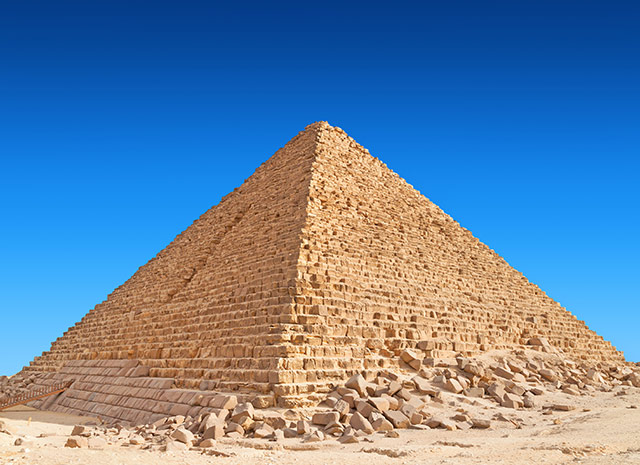Beneath the sands of Giza: Groundbreaking discovery finds ancient UNDERGROUND CITY linked to the ...

Lost City of Amenti: Groundbreaking Discovery Beneath the Sands of Giza
An Underground Metropolis Unveiled
In a discovery that echoes ancient myths and legends, a sprawling underground city has been discovered beneath the iconic Giza Plateau. Long whispered about as the legendary Amenti, this hidden metropolis is believed to be a repository of ancient knowledge and spiritual power. Using cutting-edge satellite radar technology and a revolutionary technique known as Doppler tomography, the CAFRA Project has brought this lost world to light, revealing intricate networks of tunnels, chambers, and corridors.
“This extraordinary achievement has been made possible through the processing of SAR data obtained from Capella Space satellites,” explained the Head of Communications for the CAFRA Project. “The uniqueness of this discovery lies not only in its immense historical and archaeological significance but also in the innovative method employed.”
A Technological Leap in Archaeological Exploration
The use of synthetic aperture radar (SAR) combined with Doppler tomography has allowed researchers to peer deep beneath the sands of Giza, creating detailed 3D reconstructions of the underground structures. This non-invasive approach, spearheaded by Professor Filippo Biondi, reveals a labyrinthine network extending kilometers beneath the surface, preserving the integrity of the site while unveiling its secrets.
“Thanks to ultra-high azimuth resolution radar imaging achieved through specialized spotlight acquisitions with long Doppler integration, we have been able to extract precise acoustic information,” elaborated the CAFRA spokesperson. This technological leap underscores the transformative potential of space technology within the field of archaeology.
A Multidisciplinary Team Unraveling Ancient Mysteries
This groundbreaking discovery is the result of a collaborative effort by a team of international experts. Dr. Nicole Ciccolo, a forensic handwriting specialist, deciphered ancient symbols found at the site, while Egyptologist Dr. Armando May contributed his expertise in pre-civilization studies. Professor Corrado Malanga, head of the research project, provided key insights into the metaphysical aspects of the discovery.
“This discovery marks a groundbreaking step in our understanding of ancient Egypt and its deep infrastructural relationship with the subterranean world,” noted the spokesperson. “It could lead to unprecedented revelations about the civilization that built the entire architectural complex, including the pyramids, which now appear to be just the tip of the iceberg of a colossal and hidden project.”
Rewriting the History of Ancient Egypt
The discovery challenges long-held beliefs about the technological and spiritual capabilities of ancient Egypt. The pyramids, often viewed solely as tombs, may have played a much more complex role, potentially serving as part of a larger interconnected system utilizing advanced acoustic and hydraulic technologies. This raises the intriguing possibility that the pyramids acted as resonators or energy conduits.
“The pyramids of the Giza Plateau present spatial indentations that tend to divide them in two with respect to the axes of central symmetry,” the researchers observed. “This suggests that the structures were designed to interact with natural forces, such as water and sound, in ways that we are only beginning to understand.”
The Future of Archaeological Exploration
The CAFRA project’s ongoing research, scheduled to continue throughout 2025, promises even more exciting revelations. Two exclusive conferences planned for March 2025 will offer a detailed presentation of the team's findings. The immense public interest in this discovery underscores the enduring fascination with ancient Egypt and its enigmas. As researchers delve deeper into the secrets of Amenti, what other wonders lie hidden beneath the sands of time, waiting to be unearthed?